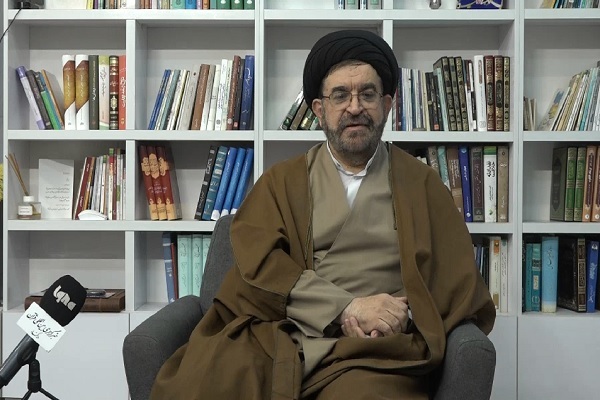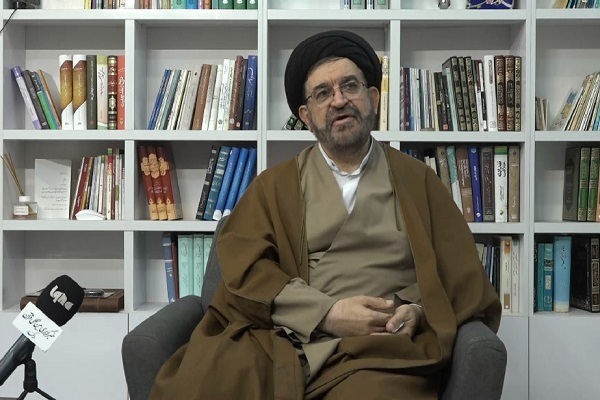Cleric Explains about First Audio-visual Quran Interpretation in English


In an interview with IQNA, Hojat-ol-Islam Mousavi Shahroudi elaborated on his studies and activities as well as different aspects of the Quran interpretation.
Following are excerpts from the interview:
Q: Please start by giving a brief overview of your biography.
A: I began my studies at the seminary in Mashhad, and when I was about 15 years old, I moved to Qom. Around the age of 18, I attended classes taught by Ayatollah Vahid Khorasani and Ayatollah Tabrizi. From the age of 19 to 31, I participated in the advanced courses of these two religious authorities while also teaching.
In 1988, I completed an English language course in Qom and later attended a specialized English course in Tehran, which led to my first missionary trip to Nigeria.
In Nigeria, both Arabic and English were used, and I delivered my lectures there in both languages. I also taught in the seminary in Nigeria, which had 70 students, using English and Arabic. After a year, I moved to Zambia. In Zambia, I taught jurisprudence in both Arabic and English for two years and delivered the Friday prayers in English, with all my lectures conducted in English. During the 30 nights of Ramadan and during the first ten days of Muharram, I also gave lectures.
After that, I spent about eight years in the United States, initially earning a master’s degree from Harvard University, followed by another master’s from Florida State University, all while actively engaging in missionary work.
On Friday nights, I taught Quran interpretation to a few Iranian, Lebanese, and Iraqi scholars, and I held lectures every Saturday and during special occasions, such as Ramadan and Muharram.
To pursue my Ph.D., I moved to the northern United States, specifically to New York City. There, I managed the Islamic Center of New York and was accepted into the Ph.D. program at Temple University in Philadelphia. In New York, I also delivered lectures for the Iranian community on various occasions.
After a year in the United States, I returned to Iran and taught specialized language and religious studies at the University of Tehran. It was during this time that Hojat-ol-Islam Qaraati proposed the interpretation project.
Apart from interpreting the Quran, I have had various programs on different channels, including 250 episodes on Nahj al-Balagha and 200 episodes on ethical and jurisprudential discussions.
Eventually, I began focusing on Quran interpretation. During this time, I taught Islamic jurisprudence in English to international master's and doctoral students at Qom University, Al-Mustafa International University, and Al-Murtada University.
Currently, I am engaged in explaining Nahj al-Balagha and am recording programs on a daily basis.
Read More:
Q: Please provide details about the audio-visual interpretation of the Holy Quran in English that you have conducted.
A: In 2009, Hojat-ol-Islam Qaraati contacted me to discuss the interpretation of the Quran. He suggested that I present a course on Quranic interpretation in English, using the resources he would provide. I welcomed this idea, and several programs were recorded and approved.
Initially, I lived in Tehran, and the programs were recorded in a studio near my home. After some time, due to my frequent trips to Mashhad, a studio was set up there so we could continue the interpretation recordings. After a year, I moved to Qom, where facilities for video recording the interpretation were also made available.
At first, the duration of the interpretation programs was 20 minutes, and this continued for about a year. Then, the Islamic Republic of Iran Broadcasting (IRIB) requested that the program be shorter, around 10 minutes. Therefore, we reduced the duration to 10 minutes, completing a full course on the interpretation of the Quran.
Read More:
Q: Have you ever thought about writing down this interpretation?
A: I insisted that documenting this work would be very beneficial because we present the interpretation of the Quran from the perspective of someone who has lived in Western societies and understands the audience there. I believe that putting it into writing would also be a great endeavor, but it requires a lot of effort and manpower. However, this has not been done yet, and we hope to be able to document it in the future.

Q: Is there an English interpretation of the Quran?
A: There is no complete visual interpretation of the Quran among Shias at all, and even among Sunnis, if there is a complete course, it is very rare. Some interpretations have been translated into English, but there is no visual English interpretation available.
Q: What has been your interpretation approach in these programs?
A: Initially, since the plan was to provide a complete interpretation of the Quran, we started with the 30th Juz of the Quran and continued verse by verse until the end of that Juz. After that, we interpreted the 29th Juz and then the 28th, and subsequently began from the start of the Quran, systematically recording up to the 27th Juz. The programs were organized and followed a verse-by-verse and Surah-by-Surah interpretation.
Regarding the interpretation method, since my expertise lies in jurisprudence and theology, the interpretation reflected this as well, emphasizing verses that pertained to jurisprudential and theological issues. In theological discussions, we focused on matters that are sometimes contentious and have relevant narrations, without mentioning weak narrations, and relied on those that are widely accepted by Shia scholars. Therefore, it can be said that this interpretation is theological and jurisprudential in nature.
Read More:
Q: Who were the target groups of this program?
A: My audience consists of English speakers who want to understand interpretation in a scientific way, going beyond mere translation. For instance, they may be curious about the Shia perspective on jurisprudential issues. These are topics of interest for English-speaking individuals. My target audience was English-speaking academics, and this information could be very beneficial for them.
4268963



